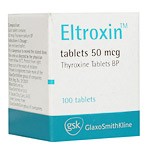Diffuse Toxic Goiter: Understanding, Diagnosis, and Treatment


A goiter is a term commonly used to describe an abnormal enlargement of the thyroid gland, a butterfly-shaped organ located at the front of the neck responsible for producing hormones that regulate metabolism, energy levels, and body temperature. While a simple goiter may arise due to iodine deficiency or hormonal imbalances without necessarily affecting thyroid function, a diffuse toxic goiter involves more specific pathological changes and functional consequences. This article explores the nature of diffuse toxic goiter, how it differs from other forms, its causes, the potential risks, and the role of Levothyroxine in its treatment.
What Is the Difference Between a Goiter and a Diffuse Goiter?
To understand the difference, it is crucial to grasp the terminology. A goiter is any enlargement of the thyroid gland, regardless of the underlying cause. It can be nodular or diffuse. A nodular goiter features one or more distinct lumps or nodules, while a diffuse goiter involves a uniform enlargement of the entire gland without nodules.
Diffuse goiter may be either non-toxic (not associated with overproduction of thyroid hormones) or toxic (associated with hyperthyroidism). When the term "diffuse toxic goiter" is used, it typically refers to Graves’ disease, an autoimmune disorder where the body produces antibodies that stimulate the thyroid to produce excessive amounts of hormones, leading to a hypermetabolic state.
What Is a Diffuse Goiter Thyroiditis?
The term "diffuse goiter thyroiditis" is sometimes used interchangeably with chronic thyroid inflammation resulting in diffuse glandular enlargement. This could refer to autoimmune thyroiditis, such as Hashimoto’s thyroiditis or Graves’ disease. In the context of a diffuse toxic goiter, thyroiditis refers to an autoimmune process in which the immune system mistakenly targets the thyroid gland.
In Graves’ disease, thyroid-stimulating immunoglobulins (TSIs) bind to the thyroid-stimulating hormone (TSH) receptors, mimicking TSH and triggering uncontrolled hormone production. This results in hyperthyroidism and causes the gland to grow diffusely due to overstimulation. Symptoms may include nervousness, weight loss, heat intolerance, palpitations, muscle weakness, and tremors. Unlike nodular toxic goiters, where hormone overproduction is localized to nodules, the entire gland in diffuse toxic goiter contributes to excessive hormone secretion.
What Is the Most Common Cause of Toxic Goiter?
The most prevalent cause of toxic goiter is Graves’ disease. This autoimmune disorder is responsible for the majority of cases of diffuse toxic goiter. It typically affects women more than men and often manifests between the ages of 20 and 40. The exact cause of Graves’ disease remains unknown, but it is believed to involve a complex interplay of genetic susceptibility, environmental factors, and immune dysregulation.
Risk factors for Graves’ disease include a family history of thyroid or autoimmune diseases, smoking, stress, pregnancy, and infections. In addition to thyroid enlargement and hyperthyroidism, Graves’ disease can also cause ophthalmopathy (eye bulging or irritation) and, more rarely, dermopathy (thickening of the skin over the shins).
Can a Diffuse Goiter Be Cancerous?
Although the term “goiter” may cause concern, a diffuse goiter is rarely malignant. The uniform enlargement of the gland typically suggests a benign condition, especially in cases of autoimmune hyperthyroidism like Graves’ disease. In contrast, cancer of the thyroid more often arises from solitary nodules or nodular goiters.
Nevertheless, it is essential for clinicians to evaluate any thyroid enlargement thoroughly, especially if there are concerning symptoms such as a rapidly growing mass, voice changes, difficulty swallowing, or a family history of thyroid cancer. Diagnostic tools such as ultrasound, blood tests for thyroid hormone levels, and occasionally a fine-needle aspiration biopsy are used to rule out malignancy.
In the context of diffuse toxic goiter, the primary concern is not cancer but the metabolic complications of sustained hyperthyroidism, which can include cardiac arrhythmias, osteoporosis, and muscle wasting if left untreated.
Diagnosis and Clinical Evaluation
A patient presenting with a diffuse toxic goiter usually undergoes a comprehensive clinical evaluation. Physical examination may reveal a uniformly enlarged thyroid, sometimes with a bruit due to increased blood flow. Laboratory tests typically show elevated levels of free thyroxine (T4) and triiodothyronine (T3) with suppressed TSH levels.
Immunological tests often reveal the presence of TSI antibodies. Imaging, such as radioactive iodine uptake (RAIU) scans, demonstrates diffuse increased uptake, supporting the diagnosis of Graves’ disease. Ultrasound may show an enlarged, homogenous gland with increased vascularity.
Treatment Approaches for Diffuse Toxic Goiter
Treatment for diffuse toxic goiter aims to reduce the excessive thyroid hormone levels and manage symptoms. The three main treatment options include antithyroid drugs, radioactive iodine therapy, and thyroidectomy.
Antithyroid medications, such as methimazole or propylthiouracil, are often the first line of therapy, especially in newly diagnosed patients. These drugs inhibit the synthesis of thyroid hormones. While effective, they require long-term adherence and carry risks such as agranulocytosis or liver toxicity in rare cases.
Radioactive iodine (RAI) therapy is a non-surgical approach that involves administering a radioactive form of iodine that selectively destroys overactive thyroid tissue. It is considered safe and effective but may lead to hypothyroidism, necessitating lifelong thyroid hormone replacement.
Surgical removal of the thyroid (total or subtotal thyroidectomy) is usually reserved for patients with very large goiters, suspicion of malignancy, intolerance to medications, or those who prefer a definitive solution. Surgery is highly effective but requires expert surgical care to avoid complications such as vocal cord paralysis or hypoparathyroidism.
The Role of Levothyroxine in the Treatment of Diffuse Toxic Goiter
Levothyroxine, a synthetic form of the thyroid hormone T4, plays a crucial role in the management of diffuse toxic goiter — not in the hyperthyroid phase, but after definitive treatment. Once a patient undergoes RAI therapy or thyroidectomy, the thyroid’s ability to produce hormones diminishes or is eliminated entirely, leading to hypothyroidism.
To restore normal metabolic function, Levothyroxine is prescribed as a lifelong replacement therapy. The dose is tailored based on body weight, age, and regular monitoring of TSH levels to maintain euthyroidism. Adequate thyroid hormone replacement ensures that patients do not experience symptoms of hypothyroidism such as fatigue, weight gain, cold intolerance, or depression.
In rare cases, Levothyroxine may also be used in conjunction with antithyroid drugs in a “block and replace” regimen, although this approach is less common. It is more frequently seen in specific cases such as pregnancy or severe hyperthyroidism where fine-tuning hormone levels is essential.
Levothyroxine is generally well tolerated, but overdosage can lead to symptoms of hyperthyroidism, while underdosage can result in persistent hypothyroid symptoms. Regular follow-up is necessary to ensure the optimal therapeutic range is maintained.
Long-Term Outlook
With appropriate treatment, the prognosis for patients with diffuse toxic goiter is excellent. Modern therapies effectively control hormone levels, relieve symptoms, and prevent complications. Once euthyroidism is achieved, patients can return to a normal quality of life, although regular monitoring remains necessary.
Adherence to Levothyroxine therapy is critical in post-treatment care, and periodic blood tests help ensure that the dosage remains appropriate. Patients should be educated on signs of over- or under-replacement and encouraged to consult healthcare providers if symptoms recur.
Lifestyle modifications such as smoking cessation, stress management, and adequate calcium and vitamin D intake (to prevent bone loss) are also recommended. In cases involving Graves’ ophthalmopathy, additional treatments such as corticosteroids, orbital radiation, or surgery may be required.
Conclusion
Diffuse toxic goiter, most commonly caused by Graves’ disease, is a serious but treatable condition characterized by uniform thyroid enlargement and overproduction of hormones. Unlike a simple goiter or nodular form, diffuse toxic goiter involves autoimmune stimulation of the entire gland. While it is not typically cancerous, it carries the risk of significant systemic complications if untreated. Diagnosis involves a combination of physical examination, hormone tests, antibody screening, and imaging.
Treatment options include medications, radioactive iodine, and surgery, with the choice tailored to each patient’s clinical profile and preferences. After definitive therapy, Levothyroxine becomes essential to maintain hormonal balance and prevent hypothyroidism. With timely intervention and proper management, patients with diffuse toxic goiter can enjoy a full and healthy life.
Medically Reviewed by Dr. Mevan Nandaka Wijetunga, MD
(Updated at May 30 / 2025)

